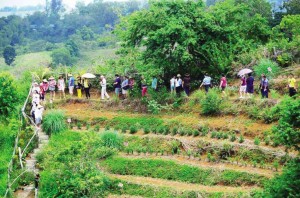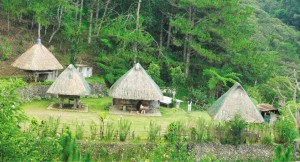Do you own a house, ancestral home, cottage, a farmhouse perhaps or manage a student dormitory?
If you do, then you can join this private sector initiative, play host to paying accredited tourists (foreign as well as domestic) and earn money in the process.

Rapha Valley in Don Salvador Benedicto, Negros Occidental is one of the country’s leading showcases for farm tourism, organic farming and homestay.
This is the core of the homestay program of Homestay Philippines, Inc.
The concept is nothing new and Homestay officials are the first to point this out.
It was Dr. Mina T. Gabor, former secretary of the Department of Tourism and now president of the International School of Sustainable Tourism, who thought of applying this concept to the Philippines, on a greater scale than before, after her travels abroad.
Homestay is a living arrangement with a host family or organization.
Out-of-town guests are offered an extra private room or space for a reasonable charge compared to the more pricey hotels and other tourism-oriented establishments. The host family must share at least one meal with the guest(s).
“Homestay is a private-sector initiative and it is the duty of the government to just support it,” DOT assistant secretary Allan Cañizal said in a recent briefing. “Homestay had been tried before but [it] failed because there was no marketing aspect. Now we have one.”
Marketing and promotions are now being done through online networks, word of mouth, fliers and direct mail.
Also discussed during the briefing was the First Homestays of the World Summit, to be held Dec. 3-5 at the Nature’s Village Resort, Bacolod City (call 02-832-0996). The course fees are P4,500 (live-out) and P8,500 (live-in).
“We will be creating jobs and livelihood opportunities,” said Gabor, “All you need is a presentable place in your home. The alternative accommodations must be safe, comfortable and affordable; this will provide extra income for the host families. We can earn additional income from these homes, some of which have been abandoned.”
“The private sector can expect something nice to happen,” she added.

Banaue town in Ifugao is one of the first in the country to offer homestay accommodations to visitors.
The accommodations can be found or developed in any area in the country visited by foreign and domestic transients, including well-known destinations like Banaue, Pagudpud and Boracay.
“The investment of the families is very minimal,” Gabor said, “They can start with one room, recoup their costs, and be able to expand and add more rooms. There are village-type accommodations like those of the T’boli (in Mindanao) while the large areas have city homestays.”
The investments, according to Rose Bilongco, Homestay Philippines president, include uniform toilets, training costs, signages, and a four-night free stay for assessment visits.
“It’s not just economics we are looking at but we want the visitors to sample, to experience the Filipino way of life,” she said, “It’s our people that we are marketing as well, not just events (and places). We want them to earn money at the same time.”
A media colleague, Lito C., was apparently inspired by all this information and decided to turn entrepreneur. He has a house in Mandaluyong City plus a rented house in Dolores, Quezon, near the mystic Mt. Banahaw.
He learned from Gabor that to join the Homestay cooperative, once must pay a P1,000 entry fee plus a sharing contribution fee of P15,000 – quite reasonable considering the advantages.
“They (the cooperative) will promote your place. And I can do business and enjoy it,” he said.
RELATED STORIES
As resorts still down, Mayor encourages tourists to try homestay in Sta. Fe
Camotes folks offer homes to tourists

